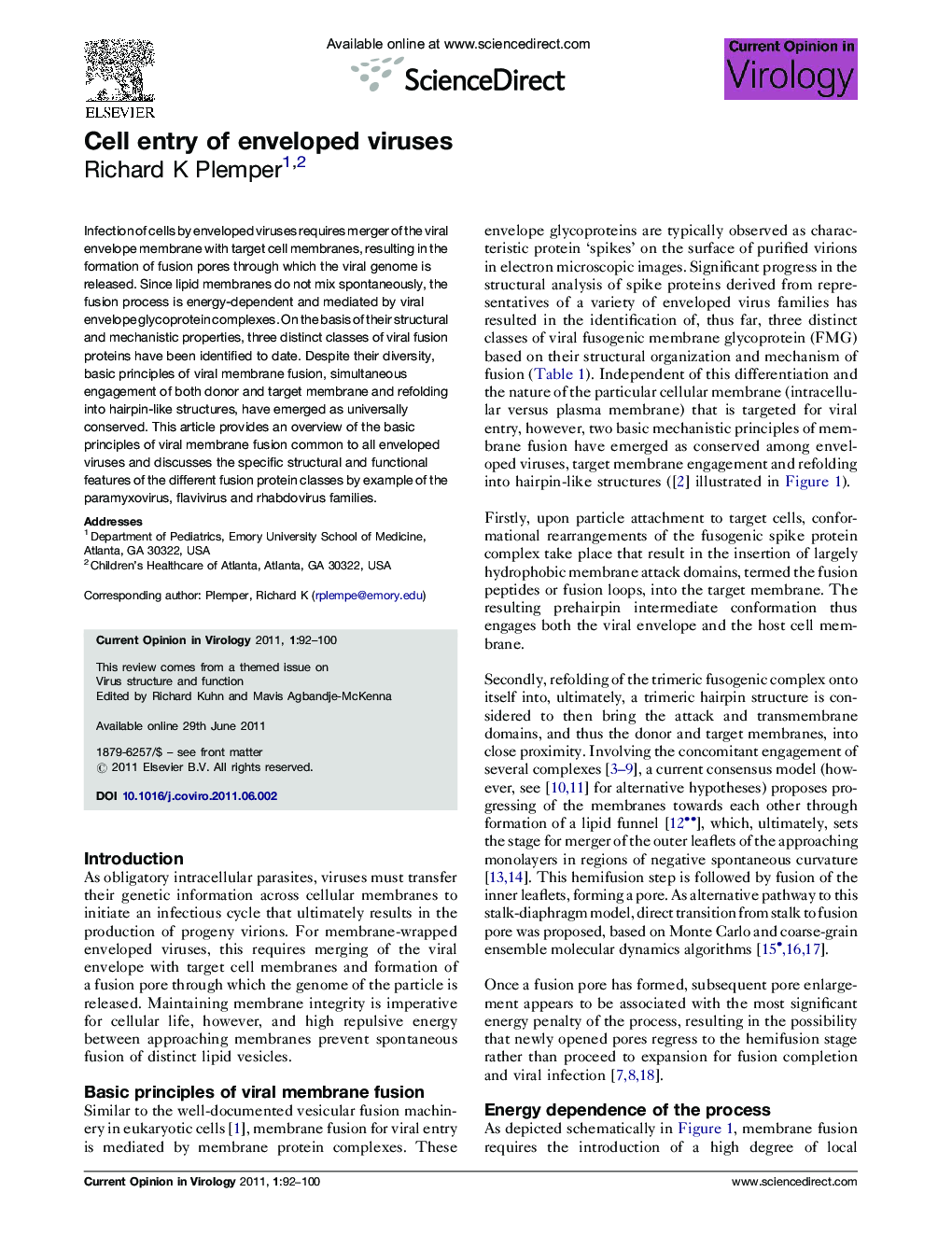| Article ID | Journal | Published Year | Pages | File Type |
|---|---|---|---|---|
| 2473615 | Current Opinion in Virology | 2011 | 9 Pages |
Infection of cells by enveloped viruses requires merger of the viral envelope membrane with target cell membranes, resulting in the formation of fusion pores through which the viral genome is released. Since lipid membranes do not mix spontaneously, the fusion process is energy-dependent and mediated by viral envelope glycoprotein complexes. On the basis of their structural and mechanistic properties, three distinct classes of viral fusion proteins have been identified to date. Despite their diversity, basic principles of viral membrane fusion, simultaneous engagement of both donor and target membrane and refolding into hairpin-like structures, have emerged as universally conserved. This article provides an overview of the basic principles of viral membrane fusion common to all enveloped viruses and discusses the specific structural and functional features of the different fusion protein classes by example of the paramyxovirus, flavivirus and rhabdovirus families.
► Infection by enveloped viruses requires membrane fusion. ► Membrane fusion mandates the introduction of local lipid curvature. ► Three structurally distinct classes of viral fusion proteins have been identified. ► X-ray analysis and cryotomography have revealed the structural basis for their activity. ► Conserved principles are membrane engagement and refolding into hairpin structures.
